earth
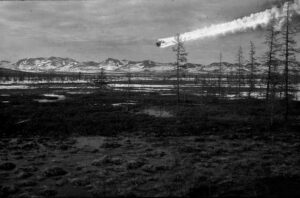 Most of us don’t really think much about the possibility of a meteor hitting the Earth, and the reality is that it’s pretty rare…at least one of much size. Most of them burn up as they enter our atmosphere, and most often the ones that do hit are so small that they do little damage. The Tunguska event a definite exception to that rule. Coming in from the east-southeast, and at and incredible speed of about 60,000 miles per hour, but amazingly still not actually impacting the Earth, it was still classified as an impact event, even though no impact crater has been found. Instead, the object is thought to have disintegrated at an altitude of 3 to 6 miles above the surface, rather than actually impacting the Earth. The meteor did not simply fall apart or burn up, but rather it blew up in what was estimated as a 12-megaton explosion, near the Podkamennaya Tunguska River in Yeniseysk Governorate, which is now Krasnoyarsk Krai, Russia, on the morning of June 30, 1908.
Most of us don’t really think much about the possibility of a meteor hitting the Earth, and the reality is that it’s pretty rare…at least one of much size. Most of them burn up as they enter our atmosphere, and most often the ones that do hit are so small that they do little damage. The Tunguska event a definite exception to that rule. Coming in from the east-southeast, and at and incredible speed of about 60,000 miles per hour, but amazingly still not actually impacting the Earth, it was still classified as an impact event, even though no impact crater has been found. Instead, the object is thought to have disintegrated at an altitude of 3 to 6 miles above the surface, rather than actually impacting the Earth. The meteor did not simply fall apart or burn up, but rather it blew up in what was estimated as a 12-megaton explosion, near the Podkamennaya Tunguska River in Yeniseysk Governorate, which is now Krasnoyarsk Krai, Russia, on the morning of June 30, 1908.
The explosion was over the sparsely populated Eastern Siberian Taiga, which likely saved many lives, but 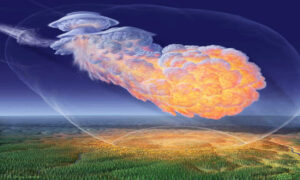 flattened an estimated 80 million trees over an area of 830 square miles of forest. The people who did witness the explosion, from a great distance, of course, reported that at least three people may have died in the event. The explosion is generally attributed to a meteor air burst, which is the atmospheric explosion of a stony asteroid approximately 160–200 feet in size. The Tunguska event remains the largest impact event on Earth in recorded history, though it is assumed that much larger impacts have occurred in times before history was recorded. An 12-megaton explosion could destroy a large city. Of course, events like this and even smaller ones have caused scientists to attempt to figure out ways to avoid these “direct hits” in the future…a rather large job, since moving the Earth out of the way of asteroids is really not an option.
flattened an estimated 80 million trees over an area of 830 square miles of forest. The people who did witness the explosion, from a great distance, of course, reported that at least three people may have died in the event. The explosion is generally attributed to a meteor air burst, which is the atmospheric explosion of a stony asteroid approximately 160–200 feet in size. The Tunguska event remains the largest impact event on Earth in recorded history, though it is assumed that much larger impacts have occurred in times before history was recorded. An 12-megaton explosion could destroy a large city. Of course, events like this and even smaller ones have caused scientists to attempt to figure out ways to avoid these “direct hits” in the future…a rather large job, since moving the Earth out of the way of asteroids is really not an option.
The Tunguska Event was a mystery for some time, after locals reported hearing a shattering explosion. Upon  investigation, it was found that trees were charred and leveled, and also that seismic waves were felt traveling through Europe. There are still some questions concerning the event, but it is widely believed to have been a comet colliding with Earth’s atmosphere. It is estimated that the explosion occurred 15,000-30,000 feet above the surface of the Earth. That explains the fact that no impact crater was found, still one would expect an explosion of that magnitude to trigger a massive fire. It did not, causing scientists to speculate that the subsequent blast wave doused the flames. Still, the massive amount of energy expelled by the blast is estimated to have been stronger than the bomb dropped on Hiroshima.
investigation, it was found that trees were charred and leveled, and also that seismic waves were felt traveling through Europe. There are still some questions concerning the event, but it is widely believed to have been a comet colliding with Earth’s atmosphere. It is estimated that the explosion occurred 15,000-30,000 feet above the surface of the Earth. That explains the fact that no impact crater was found, still one would expect an explosion of that magnitude to trigger a massive fire. It did not, causing scientists to speculate that the subsequent blast wave doused the flames. Still, the massive amount of energy expelled by the blast is estimated to have been stronger than the bomb dropped on Hiroshima.
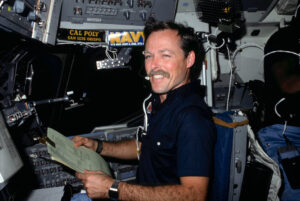
 Our space program has gone through many changes over the years. There have been accidents, losses, victories, and amazing strides in both exploration and the vehicles we use to take these trips. One of the biggest goals was to have a space station so that men and women could live and work in space indefinitely…or at least for long periods of time. On June 29, 1995, the American space shuttle Atlantis docked with the Russian space station Mir. This docking formed the largest man-made satellite ever to orbit the Earth…at that time, anyway. We all know that records are meant to be broken.
Our space program has gone through many changes over the years. There have been accidents, losses, victories, and amazing strides in both exploration and the vehicles we use to take these trips. One of the biggest goals was to have a space station so that men and women could live and work in space indefinitely…or at least for long periods of time. On June 29, 1995, the American space shuttle Atlantis docked with the Russian space station Mir. This docking formed the largest man-made satellite ever to orbit the Earth…at that time, anyway. We all know that records are meant to be broken.
For a number of years, Russia and the United States had been rivals when it came to the Space Race…as well as many other things, so this joint venture was a really big deal. It was not only about the two rivals working in cooperation together, but it was also the 100th human space mission in American history. It was such a big deal, in fact, that Daniel Goldin, chief of the National Aeronautics and Space Administration (NASA), called it the beginning of “a new era of friendship and cooperation” between the United States and Russia. The docking was also a big deal to people everywhere, with millions of viewers watching on television, Atlantis blasted off from NASA’s Kennedy Space Center in eastern Florida on June 27, 1995.
Just after 6am on June 29, the very excited seven-member crew prepared Atlantis for docking with Mir, as both crafts orbited the Earth some 245 miles above Central Asia, near the Russian-Mongolian border. The moment they spotted the shuttle, the three cosmonauts on Mir began to broadcast Russian folk songs to Atlantis to welcome them. The party was about to begin. Over the next two hours, the shuttle’s commander, Robert “Hoot” Gibson expertly maneuvered his craft towards the space station. This was no easy task. In order to make the docking, Gibson had to steer the 100-ton shuttle to within three inches of Mir at a closing rate of no more than one foot every 10 seconds. Now, I don’t know how fast that would be in miles per hour measurement, but I think these crafts could certainly be damaged by the impact. Precision was key.
Well, the docking went perfectly that day, and by 8am it was completed, and just two seconds off the targeted arrival time, while using 200 pounds less fuel than had been anticipated. Now, that’s what I call success. When docked, Atlantis and the 123-ton Mir formed the largest spacecraft ever in orbit at that time. It was only the second time ships from two countries had linked up in space; the first was in June 1975, when an American Apollo capsule and a Soviet Soyuz spacecraft briefly joined in orbit.
Once the docking was completed, Gibson and Mir’s commander, Vladimir Dezhurov, greeted each other by clasping hands in a victorious celebration of the historic moment. A formal exchange of gifts followed, with the Atlantis crew bringing chocolate, fruit, and flowers and the Mir cosmonauts offering traditional Russian welcoming gifts of bread and salt. After the party, Atlantis remained docked with Mir for five days before returning to Earth. They left two fresh Russian cosmonauts behind on the space station and took the three veteran Mir crew members home in the shuttle. The returning crew members included two Russians and 
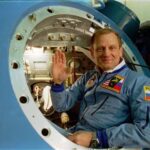 Norman Thagard, a US astronaut who rode a Russian rocket to the space station in mid-March 1995 and spent over 100 days in space. This was a United States endurance record…at that time, anyway. This was a great alliance, especially between two former rivals. NASA’s Shuttle-Mir program continued for 11 missions and was a crucial step towards the construction of the International Space Station, which is now in orbit, and is the current largest space craft.
Norman Thagard, a US astronaut who rode a Russian rocket to the space station in mid-March 1995 and spent over 100 days in space. This was a United States endurance record…at that time, anyway. This was a great alliance, especially between two former rivals. NASA’s Shuttle-Mir program continued for 11 missions and was a crucial step towards the construction of the International Space Station, which is now in orbit, and is the current largest space craft.

 My youngest sister, Allyn Hadlock has always been a gentle soul. From the time she was just a little girl, she had a heart that always remained soft. The rest of my sisters and I always said that Allyn was “always good.” She didn’t get into mischief, like the rest of us might have. I could never figure out how she did that, probably because I had a mischievous side, and did get into a few scrapes I life…oh nothing serious, but enough to not be the sister who was “always good.”
My youngest sister, Allyn Hadlock has always been a gentle soul. From the time she was just a little girl, she had a heart that always remained soft. The rest of my sisters and I always said that Allyn was “always good.” She didn’t get into mischief, like the rest of us might have. I could never figure out how she did that, probably because I had a mischievous side, and did get into a few scrapes I life…oh nothing serious, but enough to not be the sister who was “always good.”
Over the past couple of years, many people have been seeking the Lord concerning all that is going on around us. My sisters and I are no different, and we, having been raised to know the Lord, find ourselves pressing into Him in these times. My niece, Jessi Sawdon was telling me about my sister’s mothering ways with her children, and I can tell you firsthand…our parents are very proud of her. Jessi says, “One of the things I love most about my mom is her ability to always seek the Lord first. She’s instilled that in us kids and I can see all of us following this same path. And that’s exciting. Like the rest of our family, she had a strong faith, but dang, when times are tough, she is the first one there to help us make the right confessions and remind us of what the Lord has promised us. She makes everything look effortless, even though I know it’s not. She used to tell us to let Gods light shine through us. It will make everyone wonder what we’ve got, and they’ll want it too. She does that every day. I don’t think there is a better gift than her (even though it’s her birthday), and I feel so blessed that she has been such a strong spiritual leader in all our lives and has never wavered.” Allyn’s second daughter, Lindsay Moore agrees with Jessi, as do her son, Ryan Hadlock and youngest daughter, Kellie Hadlock, that Allyn has grown in her walkwith the Lord, and well as in her work and home life. There is no greater tribute than that, if you ask me.
Of course, one of Allyn’s most precious roles, these days, is that of Grammy. Grandchildren are one of the  greatest gifts your kids can ever give you, and Allyn has embraced the title of Grammy with joy and happiness. She has four grandchildren on Earth, and two waiting for her when she gets to Heaven. All are loved and are an amazing blessing to Allyn, and to my brother-in-law, Chris Hadlock. They so enjoy the time they get to spend with those precious kids…which as any grandparent knows, is never long enough. You always want more time, especially when the grandchildren live in a different city. Thankfully, for Allyn and Chris, they two that live in different cities, are still in Wyoming, so visits are more frequent than if they lived in a different state. This way, they visit often, and Allyn loves that. Today is Allyn’s birthday. Happy birthday Allyn!! Have a great day!! We love you!!
greatest gifts your kids can ever give you, and Allyn has embraced the title of Grammy with joy and happiness. She has four grandchildren on Earth, and two waiting for her when she gets to Heaven. All are loved and are an amazing blessing to Allyn, and to my brother-in-law, Chris Hadlock. They so enjoy the time they get to spend with those precious kids…which as any grandparent knows, is never long enough. You always want more time, especially when the grandchildren live in a different city. Thankfully, for Allyn and Chris, they two that live in different cities, are still in Wyoming, so visits are more frequent than if they lived in a different state. This way, they visit often, and Allyn loves that. Today is Allyn’s birthday. Happy birthday Allyn!! Have a great day!! We love you!!
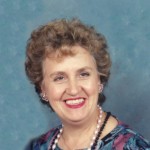 Mother’s Day has changed for me over the years, as it does for everyone as the years of their lives go by. I was very blessed to have two wonderful women on this earth to call “Mom,” one from my birth, and the other from my marriage. They both live in Heaven now, and I miss them both very much. Now, I find Mother’s Day a hard one to sometimes. While I am a mom, and my girls are moms, I don’t have a mom here on Earth to celebrate with. It leaves me feeling a bit empty, I guess. My moms were so special to me, and I loved them so much, and I know they are having a wonderful time in Heaven, but they aren’t here…and that makes all the difference.
Mother’s Day has changed for me over the years, as it does for everyone as the years of their lives go by. I was very blessed to have two wonderful women on this earth to call “Mom,” one from my birth, and the other from my marriage. They both live in Heaven now, and I miss them both very much. Now, I find Mother’s Day a hard one to sometimes. While I am a mom, and my girls are moms, I don’t have a mom here on Earth to celebrate with. It leaves me feeling a bit empty, I guess. My moms were so special to me, and I loved them so much, and I know they are having a wonderful time in Heaven, but they aren’t here…and that makes all the difference.
My moms were both women of honor. They loved me and the rest of the family 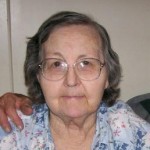 unconditionally. They taught us so many things over the years. They made us laugh, and cry a few times too. They were our disciplinarians, our nurses, teachers, chefs, and even our playmates. They were there when our lives seemed to be crashing down around us, and they were there when we were soaring above the clouds. The were our cheerleaders in ever adventure we chose to take…always telling us that we could make it. They picked us up when we fell, and made us realize that we could try again. They expected the best from us and gave us their best in return. They were the best moms ever, and I am better for having been their child. Thankfully they never asked for payment for what they did, because they are
unconditionally. They taught us so many things over the years. They made us laugh, and cry a few times too. They were our disciplinarians, our nurses, teachers, chefs, and even our playmates. They were there when our lives seemed to be crashing down around us, and they were there when we were soaring above the clouds. The were our cheerleaders in ever adventure we chose to take…always telling us that we could make it. They picked us up when we fell, and made us realize that we could try again. They expected the best from us and gave us their best in return. They were the best moms ever, and I am better for having been their child. Thankfully they never asked for payment for what they did, because they are  worth more than I could ever repay.
worth more than I could ever repay.
My girls, Corrie Petersen and Amy Royce are both amazing moms too, and they have given us four beautiful grandchildren. The family continues to grow as we add fiancées, girlfriends, and boyfriends, as well as great grandchildren. And the blessing of all these new ones are great and wonderful. I love watching as my kids and grandkids go forward into their adult lives, living out their dreams. I realize just how awesome God has been in my life to give me such wonderful blessings. He has given me far more than I could ask or think of, just because He loves me. This Mother’s Day might be a little bit more lonely that others have, but the fact has not gone unnoticed to me that I am one blessed mom, grandma, daughter, and daughter-in-law.

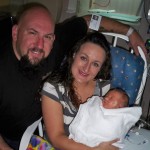 My great grand-niece, Laila Spethman was a sweet little girl, who was a light in her parents’ lives. She was loved by her whole family. Her time on Earth was short…very short…just 18 days, but her impact on all those who loved her will continue. We all look forward to the day when we will see her again, along with all our other loved ones who have gone before us. In many way, we can rejoice for Laila, because she has been someplace and seen things that we cannot, Heaven and most importantly, God. How amazing for Laila, to know the Father and the Saviour. It is a time in our lives that we all look forward to. The time when we are truly home.
My great grand-niece, Laila Spethman was a sweet little girl, who was a light in her parents’ lives. She was loved by her whole family. Her time on Earth was short…very short…just 18 days, but her impact on all those who loved her will continue. We all look forward to the day when we will see her again, along with all our other loved ones who have gone before us. In many way, we can rejoice for Laila, because she has been someplace and seen things that we cannot, Heaven and most importantly, God. How amazing for Laila, to know the Father and the Saviour. It is a time in our lives that we all look forward to. The time when we are truly home.
Still, for Laila, we feel sadness too. Not for her really, but for us. I wonder who she would have been had she stayed here. Would she have been bubbly and ever-changing, like her little sister, Aleesia, who has progressed from being a girly girl, to sometimes wanting to be a bit of a tomboy. I’m sure that has come from having three older brothers, and like all younger children, wanting to be just like the older siblings. I’m sure that Laila would have felt the same way about her brothers, Xander, Zack, and Isaac. For little girls, especially, their older brothers are their role models. Girls often base many of their ideas on what men should be like on their dads and brothers, and Laila would have had some great role models to base her ideas on, because she was loved.
We were all hoping Laila would get to come home with her parents, but that was not to be. Nevertheless, her 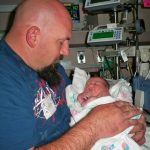
 memory will always be with us. Her sweet little face, so dainty and beautiful. Her beautiful eyes, looking at her family with love. She was so cuddly and loved being held by her family. Of course, there were a number of us who didn’t get to see her in this life, but we will always know her when we meet her again in Heaven. And then, we will get to know who she was and is. This life is so short, and while it seems like a long time, it is only a drop in the bucket of time, and then we will get to know Miss Laila Elizabeth Spethman. Happy birthday in Heaven Laila. We already love you even though we don’t know you well…yet.
memory will always be with us. Her sweet little face, so dainty and beautiful. Her beautiful eyes, looking at her family with love. She was so cuddly and loved being held by her family. Of course, there were a number of us who didn’t get to see her in this life, but we will always know her when we meet her again in Heaven. And then, we will get to know who she was and is. This life is so short, and while it seems like a long time, it is only a drop in the bucket of time, and then we will get to know Miss Laila Elizabeth Spethman. Happy birthday in Heaven Laila. We already love you even though we don’t know you well…yet.
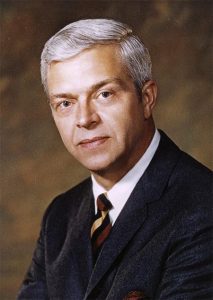 With the arrival of the 50th anniversary of the landing on the moon, on July 20, 2019, many people have been reviewing old footage and books about the event. I came across a book that caught my eye on Audible. The book, The Man Who Knew The Way To The Moon, by Todd Zwillich wasn’t exactly about the moon landing, but rather how it became possible. The book begins with Russia beating the United States to the punch when they sent a man Yuri Alekseyevich Gagarin, into space on April 12, 1961. As short as the flight was…just 89 minutes…it was still an embarrassment to the United States who felt they should have been first.
With the arrival of the 50th anniversary of the landing on the moon, on July 20, 2019, many people have been reviewing old footage and books about the event. I came across a book that caught my eye on Audible. The book, The Man Who Knew The Way To The Moon, by Todd Zwillich wasn’t exactly about the moon landing, but rather how it became possible. The book begins with Russia beating the United States to the punch when they sent a man Yuri Alekseyevich Gagarin, into space on April 12, 1961. As short as the flight was…just 89 minutes…it was still an embarrassment to the United States who felt they should have been first.
In answer to the Soviet space flight, President Kennedy challenged NASA to put a man on the moon before the end of the decade. NASA sort of panicked. Yes, they had been thinking about a moon landing…and some remote point down the road, but they were nowhere near ready to go them by the end of the decade. Nevertheless, they began to explore ideas to make it happen. One of those people who had been considering a way to make the landing possible. By this time, no one doubted the ability to go into space, and to safely return to earth. Landing on the moon was a different story.
The widely accepted method of landing on the moon was to have the original rocket back onto the moon, carrying enough fuel to take off again and return to Earth. A man named John Houbolt thought that was…well, simply impossible. Now, I’m no aeronautical engineer, like Houbolt was, and maybe I have the advantage of  knowing about the past space exploration victories, but when I think about three astronauts backing a 90 foot high, fully fueled rocket onto the moon…all I can say is, “That’s ludicrous!!” People often say that an idea doesn’t take a rocket scientist, and it this case, maybe it shouldn’t be a rocket scientist, but rather an aeronautical engineer.
knowing about the past space exploration victories, but when I think about three astronauts backing a 90 foot high, fully fueled rocket onto the moon…all I can say is, “That’s ludicrous!!” People often say that an idea doesn’t take a rocket scientist, and it this case, maybe it shouldn’t be a rocket scientist, but rather an aeronautical engineer.
John Houbolt, kept saying and trying to be heard, that it wouldn’t work, but he had a plan that would…Lunar Orbit Rendezvous or LOR. In Houbolt’s design, a smaller lunar module would land on the moon while the command module waited above. Then the Lunar module would take of and dock with the command module for the trip back to Earth. It is the way we know did work, because we have the advantage of time, but the scientists and engineers at NASA would not listen. One man, Max Faget, an immigrant from British Honduras, who designed the Mercury module, actually stood up at a meeting where Houbolt was presenting his idea, and yelled at the group, saying, “His figures lie! He doesn’t know what he’s talking about!” Houbolt was horribly humiliated, and he never forgot the incident. He didn’t let it stop him either. In the end, as Faget spent many hours trying desperately to make his own figures work, so 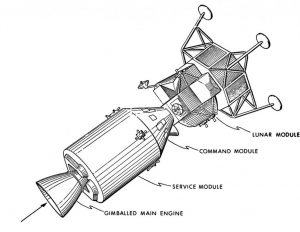 that a rocket could back onto the moon, he finally had to admit defeat. He called John Houbolt, and conceded the lunar landing design to Houbolt’s design, which was, as we all know, completely successful, because after all, his figures did not lie, and he did know what he was talking about. It was a great moment in history, and in Houbolt’s life, except for the fact that no one knew that the successful landing was his design. While the Lunar landing, 50 years ago was an amazing accomplishment, I find it quite sad that it took so many years for the world to know about how one man’s refusal to give up, actually made Lunar landing possible. We owe John Houbolt a great debt of gratitude, and it is more than 50 years overdue. Now that’s ludicrous!!
that a rocket could back onto the moon, he finally had to admit defeat. He called John Houbolt, and conceded the lunar landing design to Houbolt’s design, which was, as we all know, completely successful, because after all, his figures did not lie, and he did know what he was talking about. It was a great moment in history, and in Houbolt’s life, except for the fact that no one knew that the successful landing was his design. While the Lunar landing, 50 years ago was an amazing accomplishment, I find it quite sad that it took so many years for the world to know about how one man’s refusal to give up, actually made Lunar landing possible. We owe John Houbolt a great debt of gratitude, and it is more than 50 years overdue. Now that’s ludicrous!!
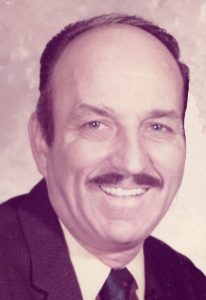

 Since both of my dads, Al Spencer (my dad) and Walt Schulenberg (my father-in-law) are in Heaven now, I don’t have a dad on Earth to celebrate with, but my husband, Bob Schulenberg is still with us…eight months after suffering a heart attack, and receiving miracle care and a miracle healing, and for that, my family and I rejoice and praise God, every day. This year could have been very different, and yet God stepped in and made a way for us. That is my biggest reason to celebrate this Father’s Day. Every day beyond October 14, 2018, is a gift. A precious gift from God. So to my husband, I wish a very special Father’s Day. I am so thankful that you are still with us.
Since both of my dads, Al Spencer (my dad) and Walt Schulenberg (my father-in-law) are in Heaven now, I don’t have a dad on Earth to celebrate with, but my husband, Bob Schulenberg is still with us…eight months after suffering a heart attack, and receiving miracle care and a miracle healing, and for that, my family and I rejoice and praise God, every day. This year could have been very different, and yet God stepped in and made a way for us. That is my biggest reason to celebrate this Father’s Day. Every day beyond October 14, 2018, is a gift. A precious gift from God. So to my husband, I wish a very special Father’s Day. I am so thankful that you are still with us.
The example my dad and my father-in-law set for their children is one of kindness and love. It is an example that we all try to follow, because they were both great family leaders. They were hard working, and took care of their families so that they never wanted for anything. Having a great dad is not automatic…unfortunately. As the saying goes, “Any man can be a father, but it takes someone very special to be a dad.” It takes someone very special to be there through thick and thin…when their children are being good and when they are being bad. Children need to know that no matter what mistakes they make, their parents will always love and support them as they work through life’s ups and downs. Growing up is hard, and we don’t always make that journey smoothly. It is a road often filled with big rock and pot holes. We stumble along, and if there is no one there to pick us up and put us back on out feet, things don’t always go very well. I am so thankful for my two dads, who were good dads to me and my siblings, and well as Bob and his siblings. I firmly believe that it was because of them that Bob and I became the parents we are.
I also feel very blessed that my daughters, Corrie and Amy have been blessed with the wonderful husbands they have. Kevin and Travis are the kid of dads I would have wanted for my girls and their children, if I could have picked. Thankfully, God chose these men for my girls, and I an very proud of the families they have 

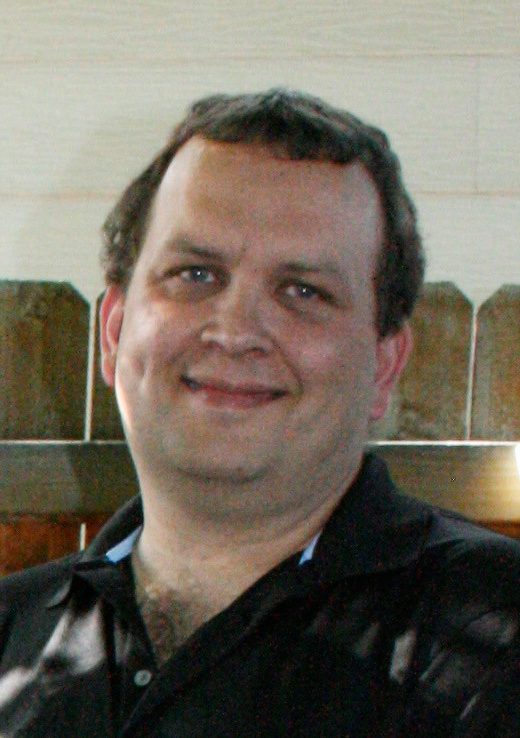 raised. Their homes are filled with love and much laughter, as well and encouragement and forgiveness. Their children know that their parents are there for them, no matter what. Now the next generation are coming into the age to have kids, beginning with Corrie and Kevin’s son, Chris, who is taking the lessons he learned from his parents, and applying them to his own daughter. Chris is a great dad, and I know that he will raise great kids. Happy Father’s Day to my guys, and all the dads out there!!
raised. Their homes are filled with love and much laughter, as well and encouragement and forgiveness. Their children know that their parents are there for them, no matter what. Now the next generation are coming into the age to have kids, beginning with Corrie and Kevin’s son, Chris, who is taking the lessons he learned from his parents, and applying them to his own daughter. Chris is a great dad, and I know that he will raise great kids. Happy Father’s Day to my guys, and all the dads out there!!
 Living in Wyoming, the one thing we can be sure of is that traffic jams are extremely uncommon here. About the only way we are going to have a traffic jam is if there is an accident at what we call rush hour…for lack of a better word. A few hours south of us, you mike find a traffic jam as you travel through Denver, Colorado during a real rush hour. Nevertheless, even traffic jams in Denver almost don’t qualify compared to other places on Earth. I have tried to think of what it might be like to be in a really bad traffic jam. I have been in some that kept me sitting for over an hour, but even that was nothing compared to the longest traffic jam in history.
Living in Wyoming, the one thing we can be sure of is that traffic jams are extremely uncommon here. About the only way we are going to have a traffic jam is if there is an accident at what we call rush hour…for lack of a better word. A few hours south of us, you mike find a traffic jam as you travel through Denver, Colorado during a real rush hour. Nevertheless, even traffic jams in Denver almost don’t qualify compared to other places on Earth. I have tried to think of what it might be like to be in a really bad traffic jam. I have been in some that kept me sitting for over an hour, but even that was nothing compared to the longest traffic jam in history.
China is one of the biggest automotive markets in the world. That booming market has a downside to it too, however. It is estimated, that in 2015, there were no less than 7 million cars on the road in Beijing. Of course there are many more now. What’s more, nearly 14 million cars are purchased each year, while 650,000 vehicles meet the road every month. It’s like saying: “Hey, everybody in Beijing must have a car. No, make that two!.” The government has tried to stop residents from buying so many cars, but they haven’t had much luck with that. With all the cars on the road, traffic jams were inevitable. Nevertheless, I don’t think anyone could have predicted just how bad those traffic jams would become. In August 2010, China was crowned the unofficial “host” of the mother of all traffic jams, with a huge car panorama that stretched for more than 62 miles and lasted for 12 days. I’m quite certain that no one could have expected this, now could the motorists be prepared with food and water.
It all happened on the Beijing-Tibet Expressway near Beijing. The highway was initially designed to be used exclusively by trucks, but due to the growing number of vehicles, passenger cars started using it too. Ironically, the cause of the huge traffic jam was the road work on the highway. Trucks carrying construction supplies to Beijing, most of them supposed to be used on the expressway in order to ease traffic, were blocked at the exit, thus causing a traffic jam that lasted over 12 days. No clear statistics concerning the number of stranded drivers were given, but instead reports published on the web at that time claim that some of the cars advanced with a speed of 2 miles per day! That is shockingly slow!!
People who could started to take advantage of the situation by selling food and water to drivers. The prices were extremely high and some of the drivers even refused to buy the supplies. That was not a good idea, because in those cases they were robbed or even stabbed. Twelve days in a traffic jam is a lot, that’s pretty  clear, and even if some drivers already had bread and cigarettes as a method of precaution, everybody had to buy at least a cup of water. The prices were astronomical, and the whole situation was insane. Strangely, authorities actually expected the traffic jam to last about a month. I guess 12 days wasn’t too bad after all. Surprisingly, according to the Guinness World of Records this isn’t the longest traffic jam in history. A previous episode that took place in France, spanning from Lyon to Paris, is regarded as the biggest jam ever. It stretched for 109 miles and happened on February 16, 1980. The reason, poor weather and the huge number of cars on the French Autoroute.
clear, and even if some drivers already had bread and cigarettes as a method of precaution, everybody had to buy at least a cup of water. The prices were astronomical, and the whole situation was insane. Strangely, authorities actually expected the traffic jam to last about a month. I guess 12 days wasn’t too bad after all. Surprisingly, according to the Guinness World of Records this isn’t the longest traffic jam in history. A previous episode that took place in France, spanning from Lyon to Paris, is regarded as the biggest jam ever. It stretched for 109 miles and happened on February 16, 1980. The reason, poor weather and the huge number of cars on the French Autoroute.
 When most people think of a meteor or meteorite hitting the earth, they think of the complete destruction of our planet, because that is the image portrayed by the movies, but the reality is that the earth gets hit quite a bit, and the effects are far from disastrous. What is far more unusual, and in reality, almost non existent, is the probability of a person getting hit by a meteorite, in fact, there may only be one known case of that at all.
When most people think of a meteor or meteorite hitting the earth, they think of the complete destruction of our planet, because that is the image portrayed by the movies, but the reality is that the earth gets hit quite a bit, and the effects are far from disastrous. What is far more unusual, and in reality, almost non existent, is the probability of a person getting hit by a meteorite, in fact, there may only be one known case of that at all.
The Sylacauga meteorite fell on November 30, 1954, at 12:46 local time in Oak Grove, Alabama, near Sylacauga. It is commonly called the Hodges meteorite because a fragment of it struck Ann Elizabeth Fowler Hodges (1920–1972). It is thought that Hodges is the only person ever hit by a meteorite, and the meteorite, while officially named the Sylacauga meteorite, was nicknamed the Hodges meteorite. As the meteorite made its way to Earth, the 8 1/2 pound grapefruit-sized chunk of space rock crashed through the roof of Hodges’ home, hit large wooden console radio, and ricocheted into her side and hand, while she napped on a couch. It left a nasty bruise, which looks eerily like a meteorite itself. It was the first documented extraterrestrial object to have injured a human being. The 34-year-old woman was badly bruised on one side of her body, but was able to walk. The event received worldwide publicity.
The meteor made a fireball visible from three states as it streaked through the atmosphere, even though it fell early in the afternoon. There were also indications of an air blast, as witnesses described hearing “explosions or loud booms”. The meteorite was confiscated by the Sylacauga police chief who then turned it over to the United States Air Force. Both Hodges and her landlord, Bertie Guy, claimed the rock, Guy’s claim being that it had fallen on her property. There were offers of up to $5,000 for the meteorite. Hodges and Bertie Guy settled, with Hodges paying $500 for the rock. However, by the time it was returned to Hodges, over a year later, public attention had diminished, and they were unable to then find a buyer. Ann Hodges was uncomfortable with the public attention and the stress of the dispute over ownership of the meteorite, so she donated it to the Alabama Museum of Natural History in 1956. The day after the fall, local farmer Julius McKinney came upon the second-largest fragment from the same meteorite. An Indianapolis-based lawyer purchased it for the Smithsonian Institution. The McKinney family was able to use the money to purchase a car and a house.
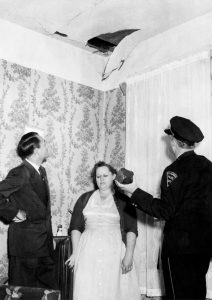
Upon the entry into the atmosphere, the Sylacauga meteorite fragmented into at least 3 pieces…the Hodges fragment 8.5 pounds that struck Ann Elizabeth Hodges. The McKinney fragment 3.7 pounds was found the next day December 1, 1954 by Julius Kempis McKinney, an African-American farmer who sold the meteorite fragment he found to purchase a car and a house. A third fragment is believed to have impacted somewhere near Childersburg northwest of Oak Grove. The meteoroid came in on the sunward side of the Earth, so when it hit, it had passed the perihelion and was traveling outward from the Sun. Considering the orbit estimations, the best candidate as parent body is 1685 Toro. The Sylacauga meteorite is classified as an ordinary chondrite of H4 group. I don’t suppose Ann Elizabeth Hodges cared what kind it was, just that it almost killed her.
 For centuries, I think most people thought Earth was alone in the universe, at least when it came to planets. It was inevitable that people would decide that they wanted to know more about the numerous stars, the moon, and the sun. Once the telescope was invented, with the earliest workings towards the design of the refracting telescope being made by German-Dutch lensmaker Hans Lippershey in 1608, people, or at least a few people, were able to see the things that really existed beyond Earth’s atmosphere. I can only imagine the shock as the first viewing proclaimed, quite loudly, that we were not alone in the universe…not even in the realm of planets, not to mention galaxies.
For centuries, I think most people thought Earth was alone in the universe, at least when it came to planets. It was inevitable that people would decide that they wanted to know more about the numerous stars, the moon, and the sun. Once the telescope was invented, with the earliest workings towards the design of the refracting telescope being made by German-Dutch lensmaker Hans Lippershey in 1608, people, or at least a few people, were able to see the things that really existed beyond Earth’s atmosphere. I can only imagine the shock as the first viewing proclaimed, quite loudly, that we were not alone in the universe…not even in the realm of planets, not to mention galaxies.
Thinking about the vastness of the universe has a tendency to make you feel very small, and I don’t suppose many people in the 1600s were very comfortable with that. These days the thought of the other planets in our galaxy doesn’t really bother us, and in fact it seems completely normal to us. As my husband, Bob and I have been going on our nightly walks, I have been watching the movement of several planets…namely Mars, Jupiter, and Saturn. Just the thought of these huge, star-like celestial bodies, at least to the naked eye, makes me think about how amazing God’s creation is. I have been able to picture in my mind, how these planets look in the universe, and now, the idea that they are stars seems absurd. Of course, my own “revelation” of that fact came centuries after the great men of science figured that fact out, and of course, that “revelation”didn’t creep into my mind today, but was rather taught to me over the years of my schooling. Still, sometimes while you know something is a fact, the enormity of it takes much longer to fully register in your head. That is the way i feel about it,after a fashion anyway…as if suddenly, I can almost see the planets with the naked eye.
It makes me wonder how the various scientists, who discovered each of the planets in our galaxy, felt the first time the telescope found a planet, especially a new one…or shall I say, one that was never discovered before that moment. With that thought running around in my head, I learned that on September 23, 1846, German astronomer Johann Gottfried Galle discovers the planet Neptune at the Berlin Observatory. We all now know Neptune as the eight planet in our solar system, and because it was the eighth, it was further out in space than 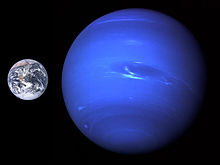 the seven that were discovered before it. I can only imagine the excitement he felt in that moment. He was looking upon something no other human being had seen before. I don’t know if he had any concept of how big the planet was in comparison to Earth, but we now know that Neptune is the eighth and farthest known planet from the Sun in the Solar System, because Pluto was later found and then after years as a planet, discounted as a planet and named a dwarf planet. In the Solar System Neptune is the fourth-largest planet by diameter, the third-most-massive planet, and the densest giant planet. Neptune is 17 times the mass of Earth. At that size, I would say that Neptune’s discovery was by no means a small thing.
the seven that were discovered before it. I can only imagine the excitement he felt in that moment. He was looking upon something no other human being had seen before. I don’t know if he had any concept of how big the planet was in comparison to Earth, but we now know that Neptune is the eighth and farthest known planet from the Sun in the Solar System, because Pluto was later found and then after years as a planet, discounted as a planet and named a dwarf planet. In the Solar System Neptune is the fourth-largest planet by diameter, the third-most-massive planet, and the densest giant planet. Neptune is 17 times the mass of Earth. At that size, I would say that Neptune’s discovery was by no means a small thing.

